From the February 2022 issue of Apollo. Preview and subscribe here.
All that can be said about Tutankhamun with any certainty is that he was a counter-revolutionary king. Before him, the pharaoh Akhenaten, a fascinating and complex figure whom the Egyptologist James Henry Breasted called ‘the first individual in human history’, had totally remade ancient Egyptian religion, creating a monotheistic cult of the sun. However, Tutankhamun (who was probably Akhenaten’s son but may have been his grandson or even younger brother) returned to the old gods and when he died, at around the age of 18 (we do not know how), he left a conservative religious legacy.
This year, which marks the centenary of the opening of his tomb, is set to be a big one for Tutankhamun. In Treasured: How Tutankhamun Shaped a Century, Christina Riggs, a scholar of the modern history of Egyptology, does not dwell on the details of the pharaoh’s life and death, exploring instead his significance as a political figure in the modern age. This is not a story of the 18th Dynasty but of the 20th century.
The moment of the tomb’s discovery in late 1922 came at a major turning point in modern Egyptian history. After the popular revolution in 1919, Egypt had just been granted independence by its British occupiers. For the next hundred years, Tutankhamun served an array of different agendas – as Egyptian national hero, symbol of African historical greatness and, from another angle, the pride of colonial Egyptology.
Riggs uses Tutankhamun to tell the history of Egypt as a nation and Egyptology as a discipline. This is not a triumphalist account of the universal beauty of Egyptian art but a complex account of changing power dynamics and museum cultures of the 20th century. One difficult history that the book returns to frequently is the building of the High Dam at Aswan and the subsequent relocation of both people and ancient temples in Nubia. Tutankhamun was enlisted to perform international museum tours, raising funds and awareness for the archaeological rescue missions.
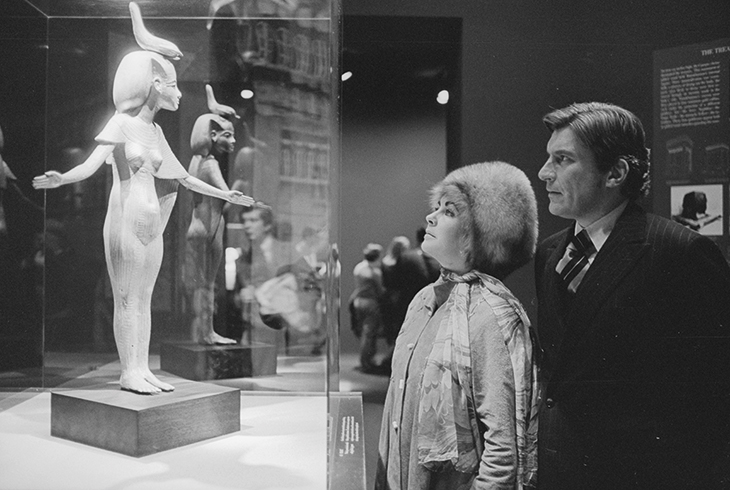
Elizabeth Taylor and Senator John Warner at the ‘Treasures of Tutankhamun’ exhibition (17 November 1976–15 March 1977). Courtesy National Gallery of Art, Washington, DC, Gallery Archives
Throughout the story, a variety of compelling figures appear and reappear. Howard Carter, the tomb’s discoverer, of course features prominently. But so do less well-known archaeologists such as Christiane Desroches Noblecourt – Egyptologist, member of the French resistance, and Tutankhamun enthusiast, who marshalled international efforts to save the temples threatened by the Nile’s rising water levels in the 1960s. As Riggs recalls, she was such an influential figure in Egypt that in 1956, after France, Britain and Israel attacked Egypt, the government wrote to UNESCO banning all academics and scholars from those countries, ‘with the exception of Madame Desroches Noblecourt, if she wished’.
Riggs also weaves her own life through the narrative. From her first encounters with Tutankhamun in an Ohio school, to her education at Brown then Oxford, and her time spent in museums and archives, she charts her own place in Tutankhamun’s story (and Tutankhamun’s place in hers). She describes the alienation she felt as a woman from a modest Midwestern family which, in her words, ‘had just made it to the middle class’, mixing with the anglophone elite on both sides of the Atlantic, and the grief of losing her father before he could see her do any of it. These authorial asides are unobtrusive but compelling, apt additions to a book that shows just how many different lives have been affected by this royal tomb.
In the past decades Egyptology has taken an important turn as scholars have begun to acknowledge the colonial history of this supposedly ‘neutral’ and ‘scientific’ discipline. Ever since the discovery of the tomb, Egyptians have taken pride in it. Mounira al-Mahdeyya, a nightclub singer in the 1920s, released a song that took aim at the new Egypt’s doubters. The last lines goes ‘How can you say you are better than us? My country is the cradle of freedom and Egypt is the mother of civilisation and we are the children of Tutankhamun.’ Across the country, everyone was talking about the newly discovered king; plays were produced, articles were written, and speeches were given extolling their world-famous ancestor.
But not everyone appreciated this Egyptian pride. The excavation team had been led by English archaeologists and, as this book details, the British have felt a sense of ownership over the discoveries ever since. When Howard Carter intended to unwrap the mummy, a member of the Egyptian parliament’s upper house sent a telegram saying that Tutankhamun deserved the respect due to him as an Egyptian king and should be left alone. But no one listened; the unwrapping went ahead.
Until recently, history books have maintained this exclusion. But now, after work by scholars such as Donald Malcolm Reid, Elliott Colla and Ahmed Mekawy Ouda, Riggs gives much more prominence to Egyptians. Nasser’s minister of culture Tharwat Okasha and Zahi Hawass, the controversial archaeologist with his own range of replica hats, both play important roles in the century-long narrative.
In the later sections of the book, where there is a lot of material to build a story around and living people to interview, the Egyptian side of the story is expansive. When it comes to the early years of Tutankhamun’s story, in the 1920s and ’30s, things are murkier. We know, for instance, that a huge team of Egyptians helped excavate the tomb but we know almost nothing about them as individuals. If we are lucky we get a first name, but that is about all we can hope for. These historical silences have proved very difficult to break. Getting a full Egyptian perspective on the discovery of Tutankhamun’s tomb and its immediate aftermath is work that still needs to be done.
Tutankhamun, the inscrutable boy king, who is a much more effective guide to our century than to his own, is currently involved in another chapter of Egypt’s national story. As the government moves out of the centre of Cairo, heading for the new desert capital, Tutankhamun too is moving – to the Grand Egyptian Museum in Giza. In a grand spectacle of Egyptian nationalism, his famous mask will be paraded across the city just days before the museum’s opening, planned for this year – and debates about his legacy will rumble on.
‘Treasured: How Tutankhamun Shaped a Century’ by Christina Riggs is published by Atlantic Books.
From the February 2022 issue of Apollo. Preview and subscribe here.
Unlimited access from just $16 every 3 months
Subscribe to get unlimited and exclusive access to the top art stories, interviews and exhibition reviews.

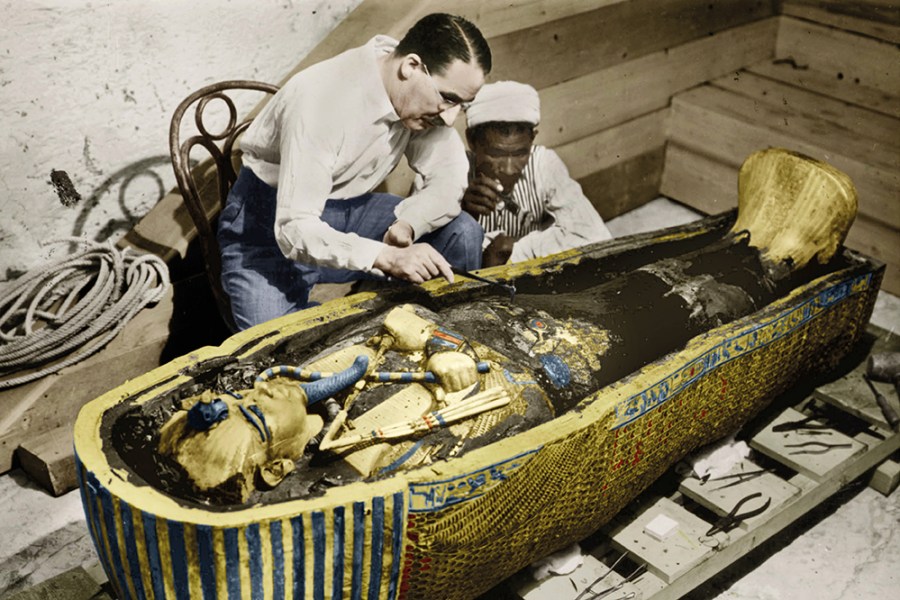
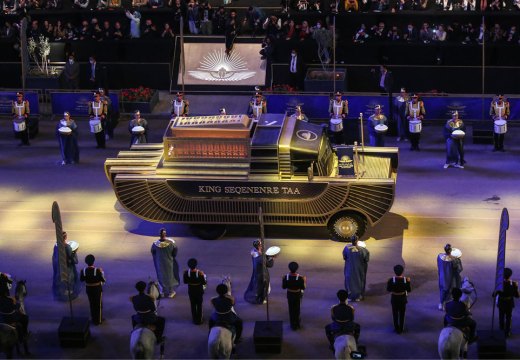
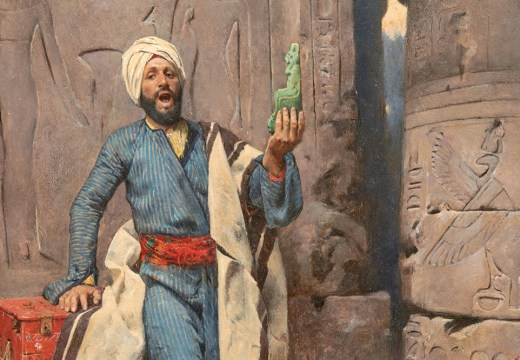
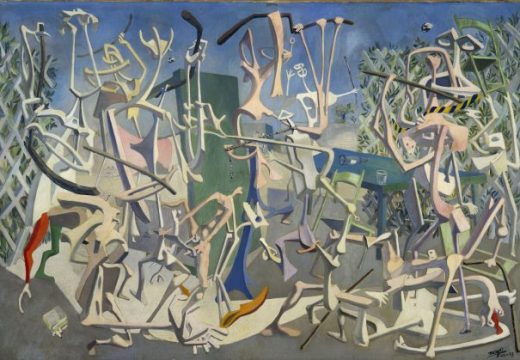









![Masterpiece [Re]discovery 2022. Photo: Ben Fisher Photography, courtesy of Masterpiece London](http://www.apollo-magazine.com/wp-content/uploads/2022/07/MPL2022_4263.jpg)
It’s time for the government of London to return to its rightful home